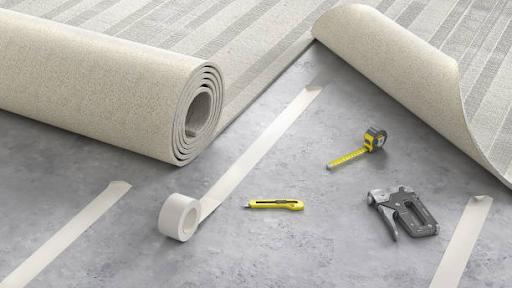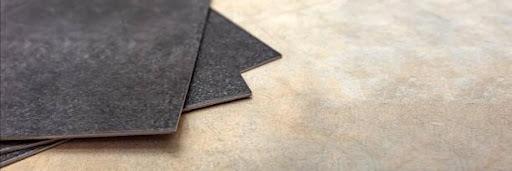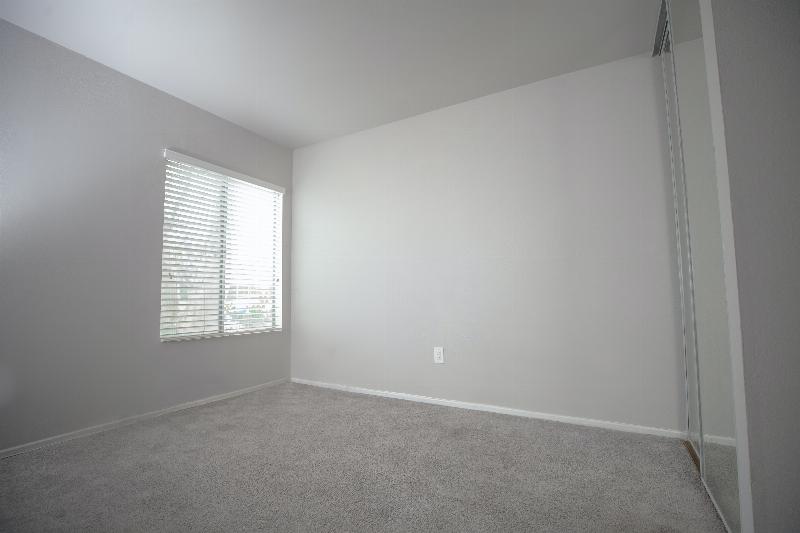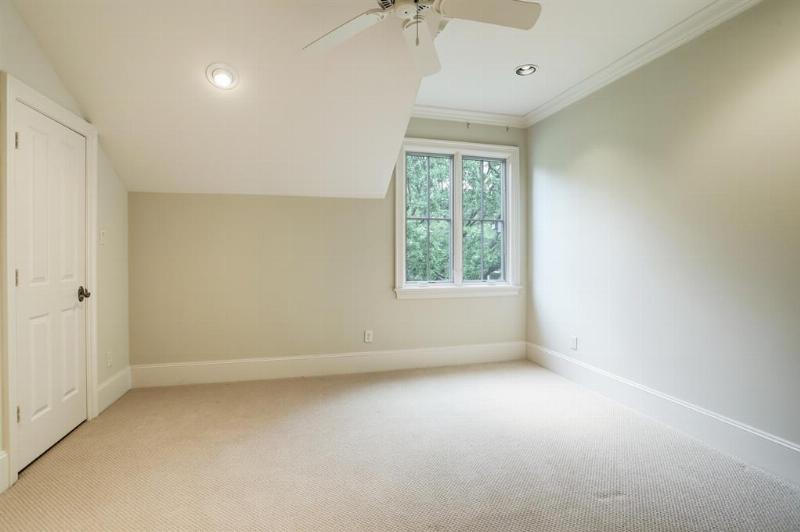How To Install Carpet On Concrete
Some flooring options are naturally attractive. This allows you to leave the surface exposed without losing elegance. When it comes to concrete floors, though, the appearance isn’t as appealing. You’ll want to use a more appealing floor covering such as carpet instead.
Carpet is a soft, pleasant, and warm material that comes in a variety of colors and textures. It can be difficult to put carpet directly over concrete due to the possibility of moisture underneath. You’ll need the correct kind of carpet, as well as a level and dry concrete surface, and the carpet must stick securely to the concrete. If you’re thinking about putting a carpet over a concrete floor, here’s all that you should know.
Choosing the perfect carpet
A concrete floor is a cold hard surface and a carpet generates a warm layer on top so condensation and wetness can collect on the carpet’s underside. If the air is humid, your carpet may be exposed to additional pockets of moisture, which can quickly damage it. Ensure you invest in a good-quality synthetic underlay to provide more cushioning. This will also provide a barrier between your carpet and the floor for the greatest results.
Consider a carpet that can withstand heavy traffic and frequent cleaning in a commercial setting. These carpets may not provide a lavish atmosphere but are extremely practical.
They will soften the sense of the space while also reducing noise. For first-time carpet installers, pattern matching can be difficult, so you can choose to go with a neutral color scheme. (Hunker, 2021)
ProTip Takeaway. Synthetic carpets, in general, are a superior choice since they absorb less moisture overall than carpets composed of natural fibers. Synthetic fibers are also more likely to survive considerably harsher cleaning solutions. So, if something goes wrong cleaning will still be simple.
Steps To Install A Carpet On Concrete
To make the project even more cost-effective, you can install the carpet yourself rather than employing a contractor. It’s best to start with a firm concrete subfloor when putting on carpet since it provides a stable foundation.
The general procedure entails preparing the surface by cleaning and leveling the surface. The smooth edge, also known as tack strip, is then installed. The underpad is then placed.
And finally, lay the carpet out while fastening it to the tack strip. You will also trim any extra while tucking the carpet’s edges in. By following these steps, your carpet installation should go well.
ProTip Takeaway: Don’t choose the thickest carpet padding you can find. Use the recommended thickness for the carpet you’ve chosen.
Tools/Materials Needed
|
Hammer |
Bubble level/spirit level |
|
Tucker |
Knee kicker |
|
Leveling compound |
Underpad |
|
Carpet |
Carpet knife and blades |
|
Carpet trimmer |
Carpet stretcher |
|
Seam tape and duct tape |
Utility Knife |
|
Scraper |
Vacuum |
Preparing The Concrete’s Surface
The first thing is to figure out how much material you’ll need. For this, you will have to measure the room. Once you’ve determined the length and width, multiply them to get the square footage.
Spend some time checking the surface of your concrete before laying down your carpet. If there are any major cracks, leveling compound or filler can be used to fill them.
Vacuum the area and check the level of the floor with your bubble level, also known as a spirit level. Hopefully, the floor was properly installed in the first place. If there are any portions of the project that you are unhappy with, you can use a leveling compound to make them level.
The usual way to do this is to make a paste out of it, apply it to the affected regions, and smooth it out with a trowel. However, each product will come with thorough instructions.
The next thing you need to do is to remove any nails or screws that may have been lodged in the concrete using a hammer. You can also crush the concrete parts that are sticking out by pounding them with your hammer a few times.
If there are any holes, use a concrete filler to fill them in. After you’re done and satisfied with the surface, you can place the tack strips. (Adamms Carpets, 2015)
Installing The Tack Strips
Tack strips, also known as smooth edges, are thin strips of wood with sharp metal points sticking out at the top. The carpet is held in place by the pointed edges that grip the underside. Concrete tack strips should be used instead of wooden tack strips. The nail you use to push into the concrete also must be of the proper size.
Lay the tack strips around the perimeter of the room, leaving about a 14-inch (5-mm) gap between the wall and the tack strip’s edge. To obtain a very great finish at the end, you’ll need that extra space between the wall and the tack strip. The tacks should always face the wall. You can now lay your underpad and carpet once you’ve installed the smooth edge.
ProTip Takeaway. The strips go by different names like concrete tack strips or concrete smooth edges. Cement tack strips and smooth edges are two more names for them.
Installing The Carpet And Underpad/Underlay
Lay out your underpad and cut it to size. Start by laying it down on one wall, then cutting it on the opposite wall. The best way to handle this is to let it float rather than bonding the underpad to the concrete surface.
After you’ve spread everything out, trim the edges so that the rough edge is hidden under the smooth edge. It’s key that the smooth edge is exposed so that it can hold the carpet’s bottom. Then use duct tape to tape the seams together.
Thereafter, lay out and rough cut the carpet to fit. Make sure not to cut it too close to the bone.
In most cases, a foot (30 cm) of extra carpet at the edge is sufficient. That way, when you cut it off with a carpet trimmer later, you’ll have a very perfect edge. (Ready To DIY, 2020)
ProTip Takeaway. Rebonded foam is widely regarded as the best carpet underpad. However, any form of foam, as well as rubber and felt, can be used to install the carpet.
Stretching The Carpet Into Place
Stretch the carpet as far as you can with your hands, and then pull the corners into place with a knee kicker. Begin by hooking the knee kicker into the carpet in one corner.
Tap the knee kicker with your knee while pulling the carpet with your hands. Continue doing so until you can attach the carpet corner to the tackless strips. Repeat this procedure for each of the four corners.
Trimming and Tucking
You’ll need to trim and tuck the edges of the carpet now that the carpet is stretched into position. To do so, run your carpet trimmer along the entire edge of the wall. To achieve consistent cuts, always trim the carpet from the back with a sharp carpet knife and a metal straight edge.
After that, tuck the carpet between the smooth edge and the wall with your tucker. Cover the gap around the room’s perimeter with baseboards or trim.
Repeat this process all the way around the wall. Once you are done the carpet will now be completely installed. (Captain Patio, 2020)
Other Factors To Consider
A carpet is usually held in place around the borders using strips that are firmly glued to the floor. This is also the case for concrete floors and it’s likely that this isn’t enough. This is because the carpet will continue to shift and move almost gradually.
The backing will also be damaged with such an abrasive surface underneath. As a result, you may find that choosing a carpet that can be glued directly to the flooring to avoid any movement is preferable.
Make Use of the Right Underlayment
You should use a waterproof barrier between the carpet and the concrete. This will help to preserve your flooring while allowing moisture to dissipate. One of the most frequent barriers to use under your carpet is a dimpled polyethylene pad. This cushion allows airflow beneath the carpet, ensuring that any extra moisture is evaporated.
This pad will not only absorb moisture, but it will also absorb sound, which will aid to quiet a noisy environment. (Complete Carpet CO, 2021)
ProTip Takeaway. Remember to match your carpet to your underlayment. You risk damaging the carpet if you use an underlayment that is too soft with a rigid carpet.
Moisture Detection on Concrete Floors
A concrete floor can appear deceptively dry at times especially in the basement. When, in fact, moisture is infiltrating the house through the floor. If the humidity isn’t regulated, you should wait to put the carpet down until everything has dried out.
If you are working on installing a carpet in the basement, here’s a quick way to see if your basement is damp:
- Place a piece of plastic on the floor and tape it down. In the morning, look to see whether there is any condensation above or below the plastic.
- If water has accumulated above the plastic, the humidity in your room is too high.
- Additionally, if water has accumulated below, water is most likely leaking into the basement. Before you lay any carpet, make sure your concrete is totally dry. (Captain Patio, 2020)
Ready To Install a carpet on your Concrete
Concrete flooring isn’t the most forgiving of surfaces to work with. If you’re unsure about anything or the work seems too much, get professional help. There’s no reason why a carpet can’t be set on a concrete floor and last for many years with the correct carpet and underlay.
Smart Remodeling LLC in Houston specializes in carpet installation and provides high-quality installation. For assistance and advice, feel free to contact us today.









